It's time for another update on the Duelund-Altec Project.
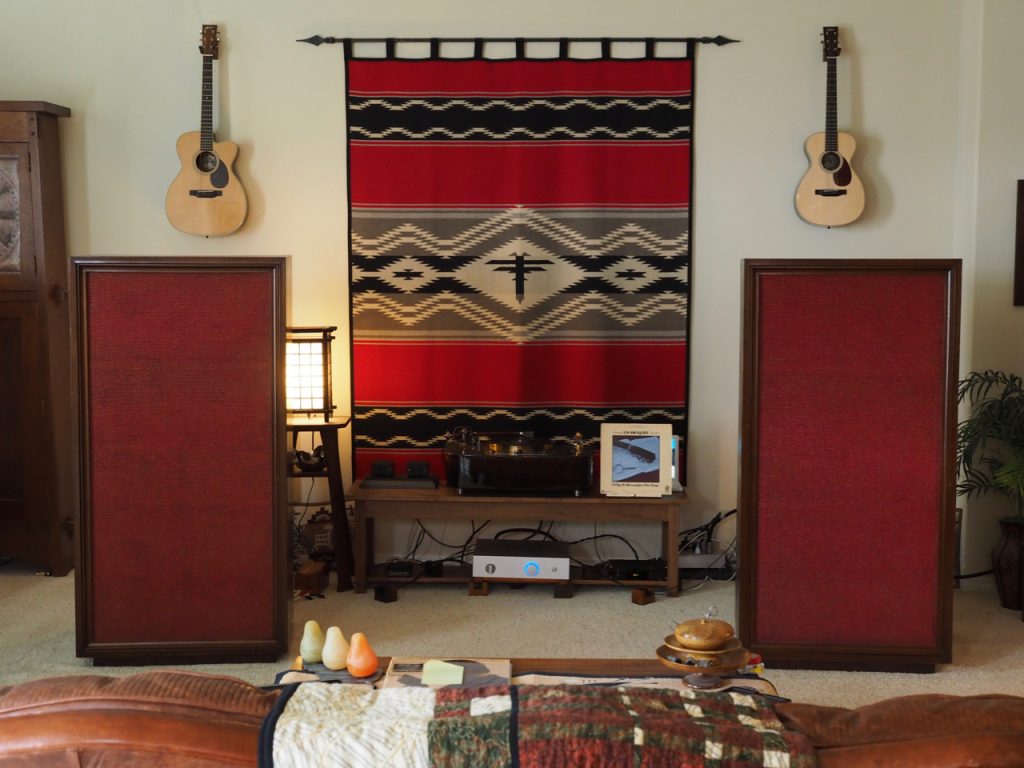
The Duelund-Altec Project "Stokowski" Altec's with their Duelund CAST Sn-Cu crossovers.
In my most recent updates of the Duelund-Altec Project I discussed the overall project context HERE, the selection of speaker cables for the most complementary voicing HERE, and I wrote a just-for-fun post about the musicality magic of vintage Altec's HERE.
I've never been enamored of any audio equipment like I have been with the Duelund-Altec Project "Stokowski" Altec's with their Duelund CAST Sn-Cu crossovers.
I loved the musicality of the "Stokowski" Altec's even with their original Altec N-500-D crossovers, but for example, my Tannoy Westminster Royal SE's were in no real danger of being displaced by them as my primary loudspeakers for music listening.
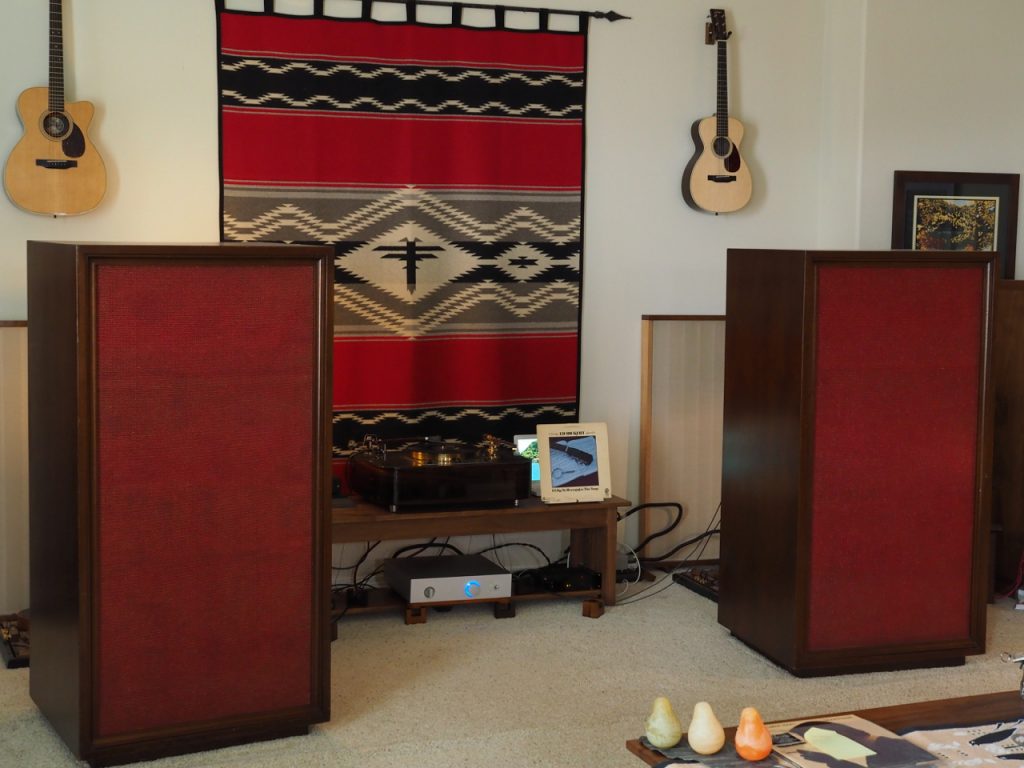
The Duelund-Altec Project "Stokowski" Altec's.
That's all changed with the addition of the Duelund CAST Sn-Cu crossovers to the "Stokowski" Altec's - and the extraordinary sonic musical, emotive, and sonic performance they have achieved - and now my Westminster's are in imminent danger of being permanently displaced as my primary music listening loudspeakers. However, I'm not giving up on my Westminster's just yet, as I believe they still have more to give in overall performance, and I plan to explore their performance more in the future with some planned internal wiring updates.
I'm still struggling with how to articulately describe the full performance of the "Stokowski" Altec's with their Duelund CAST Sn-Cu crossovers.
The Duelund CAST Sn-Cu crossovers bring a level of performance to the Altec's that still astonishes me every time I listen to them. I was expecting elevated performance from the Duelund CAST Sn-Cu crossovers, but I never imagined the transformation would be so dramatic, and how much their addition would be breaking new ground compared to any other loudspeaker & crossover combination I've ever heard in terms of overall musicality, sonics, and particularly with their ability to have the listener "feel" the music in terms of emotional impact.
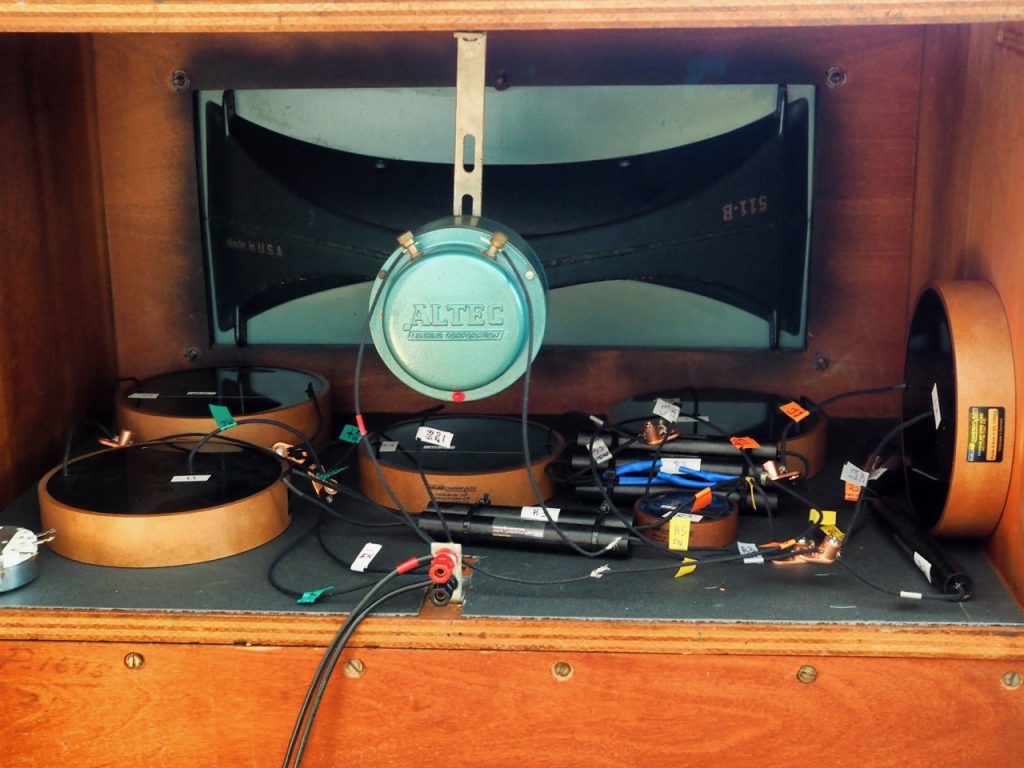
Duelund CAST tinned-copper crossover breadboards.
It's rather easy to characterize the musicality contribution of the Duelund CAST Sn-Cu crossovers to the "Stokowski" Altec's performance in terms of the usual metrics of live-like timbral realism, the resolution of tone color, melody, harmony, rhythm, beat, tempo, dynamics, and their ability to play naturally at live-like levels appropriate to a given piece of music, as they score an easy "A triple-plus" in musicality, by presenting the most natural sounding and live-like musicality with the "Stokowski" Altec's I've ever heard come from a pair of loudspeakers.
After a decade or so of dissing audiophile-style sonics, the Duelund CAST Sn-Cu crossovers have helped me realize that it's possible to get superb transparency, resolution, soundstaging, a voluminous sense of ambient ‘space’ in a recording, and imaging, in a way that sounds utterly natural & musical, and adds significantly to listening pleasure (rather than detract from it like most hifi gear does that is voiced to get audiophiles' attention with an annoyingly artificial sounding presentation of audiophile-style sonics).
I never thought I'd hear the day that I could experience such superb audiophile-style sonics and live-like musicality in the same set of loudspeakers, but that day has arrived thanks to the Duelund CAST Sn-Cu crossovers and the "Stokowski" Altec's!
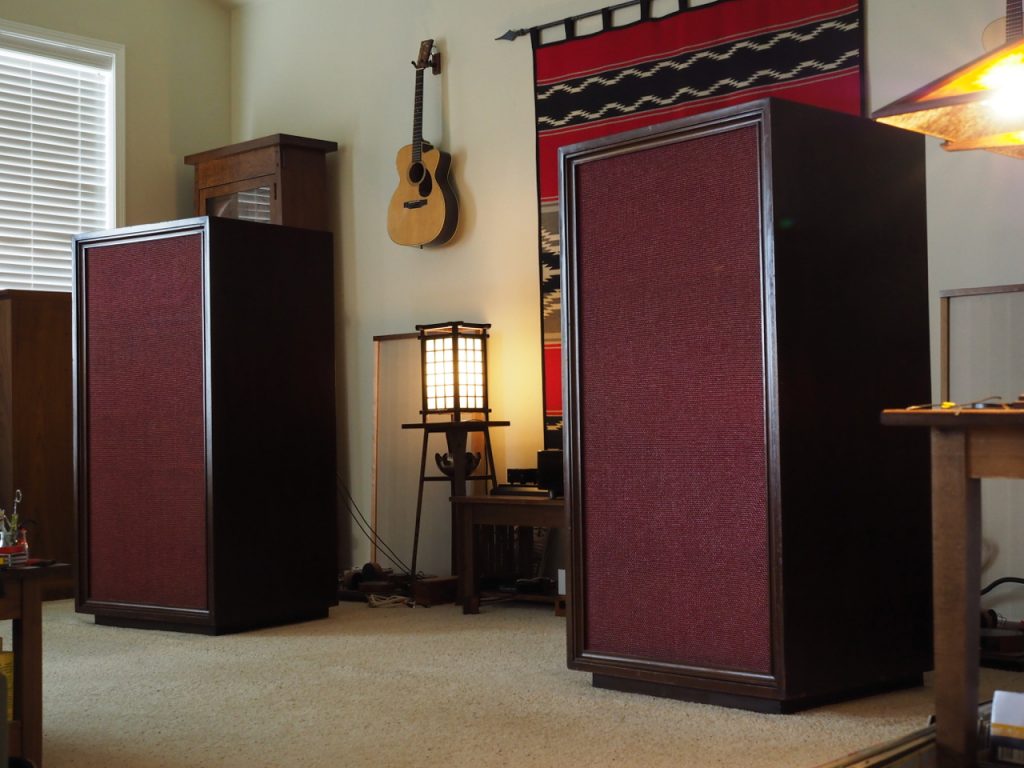
Stokowski Altec's with their Duelund CAST Sn-Cu crossovers.
The hard part to articulate about the Duelund CAST Sn-Cu crossovers on the "Stokowski" Altec's is their ability to have the listener intensely "feel" the music, and the dramatic effect that has on listening sessions in terms of emotional impact & involvement.
This realm of "feeling the music" so intensely - and the way it enhances the emotional impact of the music - is my "final frontier" in audio. I hope that as I start to understand better what attributes brings this sort of performance about, and am able to more adequately articulate what I am hearing, that more of you will get to experience it as well so we can share impressions.
A case in point is my good friend Santos Ortega. Santo's birthday was last week, so we got together to celebrate his birthday with some excellent food, a tasty bottle of cabernet sauvignon, and followed by a little music listening with "Stokowski" Altec's and their Duelund CAST Sn-Cu crossovers.
I was really eager for Santos to hear the Altec's with the Duelund CAST Sn-Cu crossovers, and while I told Santos how much I enjoyed their performance, I didn't mention exactly what it was about their performance that I like so much, so I didn't influence his perceptions.
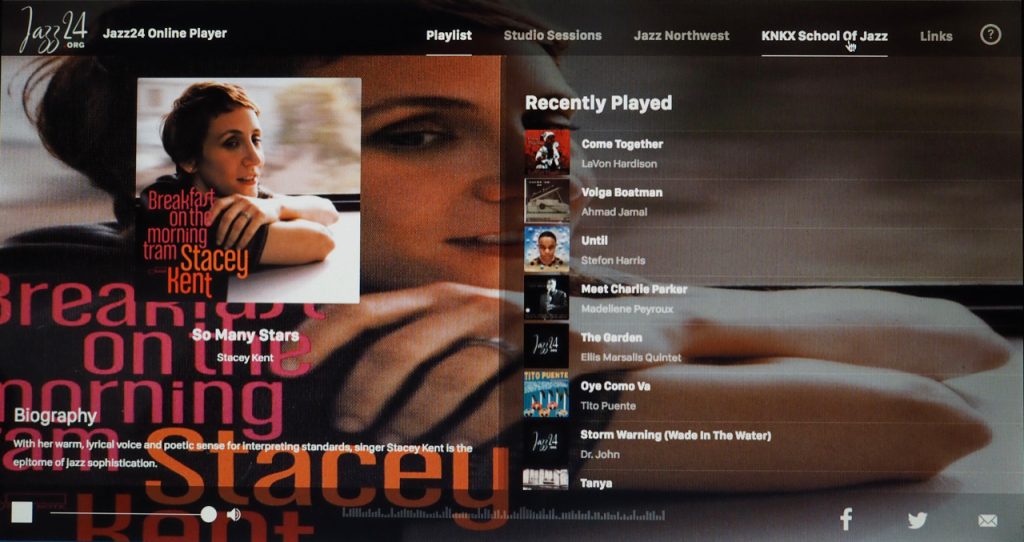
Jazz24
Santos and I started our listening by streaming Jazz24 from my aging MacBook to the Mhdt Laboratory Paradisea+ USB DAC.
Altec's generally, and the "Stokowski" Altec's with the Duelund CAST Sn-Cu crossovers in particular, make digital - even affordable digital like what I'm using in this example - sound astonishingly good.
In fact, after installing the Duelund CAST Sn-Cu breadboard crossovers into the "Stokowski" Altec's, my modest digital front-end sounded significantly better than playing superb 45RPM records from Analogue Productions on my CTC Garrard 301 did, before installing the Duelund crossovers. The transformation was truly profound and gave me new perspective on what's possible to expect from digital.
Yes, good LP's on my CTC Garrard 301 are even better, but I no longer listen to digital and feel like something important is missing from it. Listening to digital with the "Stokowski" Altec's and their Duelund CAST Sn-Cu crossovers is so musically satisfying that I'm in a constant state of wonderment that what I'm hearing is possible from any digital source, let alone an affordable one like the one I'm using.
As expensive as the hand-crafted Duelund CAST tinned-copper components are, they actually might be the most cost-effective way to achieve this level of performance.
Ok, I got off track a bit there, but now back to Santos.
Santos voiced similar impressions to mine about the performance we were hearing with my modest digital front end, and when we finally switched over to analogue - we were in no hurry as the digital sounded so good - the performance elevated once again.
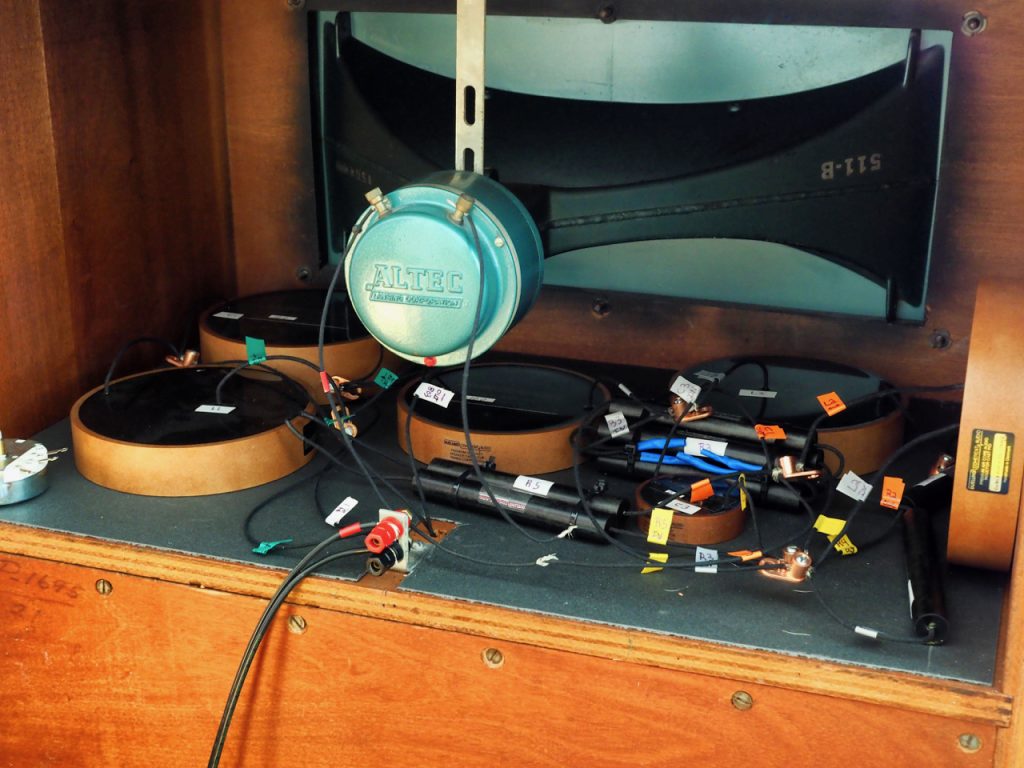
Duelund CAST Sn-Cu crossover breadboard in the Stokowski Altec.
As we were looking at the Duelund CAST Sn-Cu crossover breadboards in the Altec's, Santos - with no mention of it by me - said, "What's really impressive about these is the way they make you feel while listening to music." Exactly.
Santos picked up immediately on the extraordinary "feeling" aspect of the Duelund CAST Sn-Cu crossovers performance. This effect is due to the tinned-copper Duelund CAST components, which for whatever reason, have the ability to engage the listener with an extraordinary level of "feeling" as you are listening to music, and I've never heard anything like it.
You might remember that one of the things I've praised about the Duelund CAST Sn-Cu crossovers performance on the Altec's is the incredible ease they display at live-like volumes, but what I have also realized over time is that they are also remarkably engaging at softer than live SPL levels - even significantly softer - and they maintain all the musical, sonic, and "feeling" traits I've reported on undiminished, even at low SPL listening levels. The more I think about those two observations, the more impressed I become with them.
Frederik has really outdone himself in designing the Duelund CAST Sn-Cu components, and in one fell swoop he has advanced what is possible at the edge of the audio arts significantly, and by making them available to manufacturers - as well as to us in the general public - I suspect we are going to start hearing more reports praising them to the heavens as new products emerge, and older ones are revitalized dramatically, like I have experienced with my "Stokowski" Altec's.
Say to yourself over and over, "Duelund CAST tinned-copper components are special, Duelund CAST tinned-copper components are special ...", at least that's where I'm at with them.
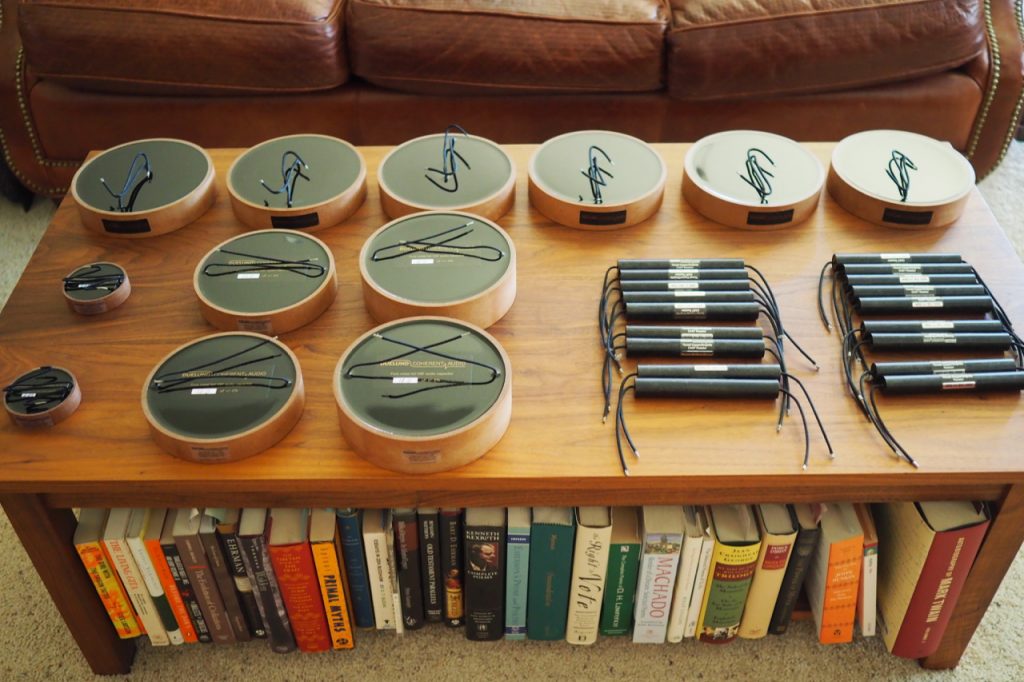
The Duelund CAST tinned-copper components for the Duelund-Altec Project.
Yes, they are hand-crafted, so you have to wait for quite a while after ordering a custom set of them to get them, and yes, they are expensive, but the performance advancement they offer is so dramatic that everything else pales in significance once you hear what they can do. At least that's my take on the tinned-copper Duelund CAST components - they're really something special. My expectations on what to expect from audio performance have been completely been reset by the Duelund CAST Sn-Cu crossovers on the "Stokowski" Altec's.
600V Duelund DCA12GA Tinned-Copper Speaker Cables
I have been telling people that for speaker cables you should go with the standard Duelund DCA12GA tinned-copper cables and their oil-soaked & baked dielectric, but the more I listen to the 600V Duelund DCA12GA tinned-copper cables with their CAST-like dielectric (to achieve their 600V rating for use in power cords) as speaker cables, the more impressed I've become by their performance, and the more I have realized they are a valid choice for speaker cables in their own right. The fact that the 600V DCA12GA tinned-copper cable is so affordable is icing on the cake!
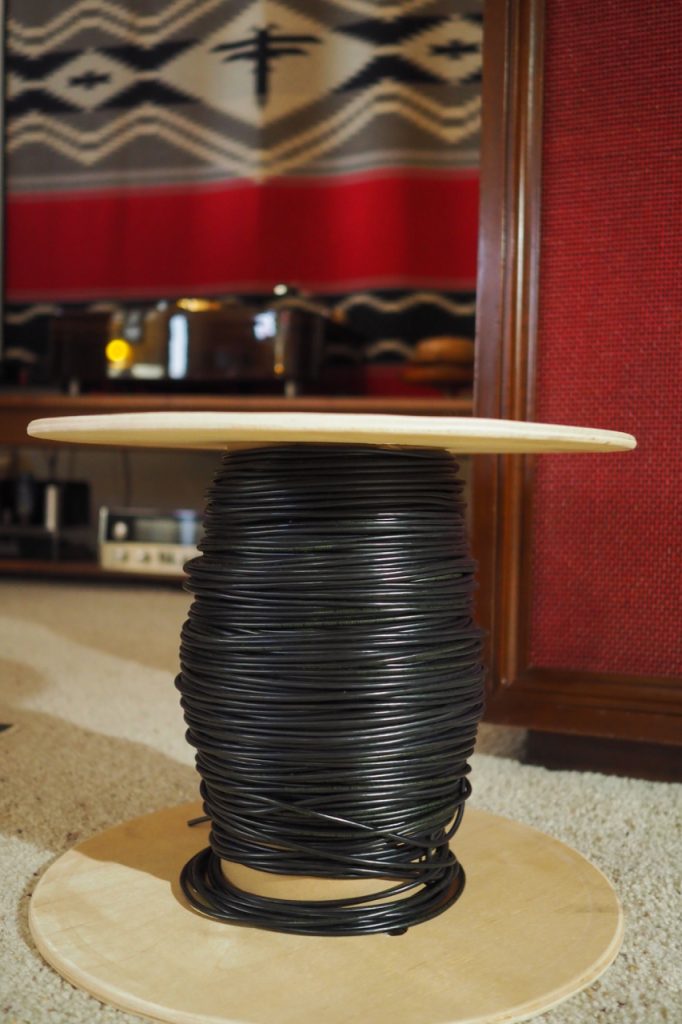
The new 600VDC Duelund DCA12GA tinned-copper tone wire!
I was planning on swapping the 600V DCA12GA Sn-Cu speaker cables out and inserting the signal version of the DCA12GA Sn-Cu speaker cables, but the 600V versions have been sounding so good I just haven't got around to it yet.
Note that the level of performance I've experienced from the 600V DCA12GA speaker cables was realized after 6 days of conditioning on my Cable Cooker, and a fair amount of in-situ run-in time on the Altec's afterwards.
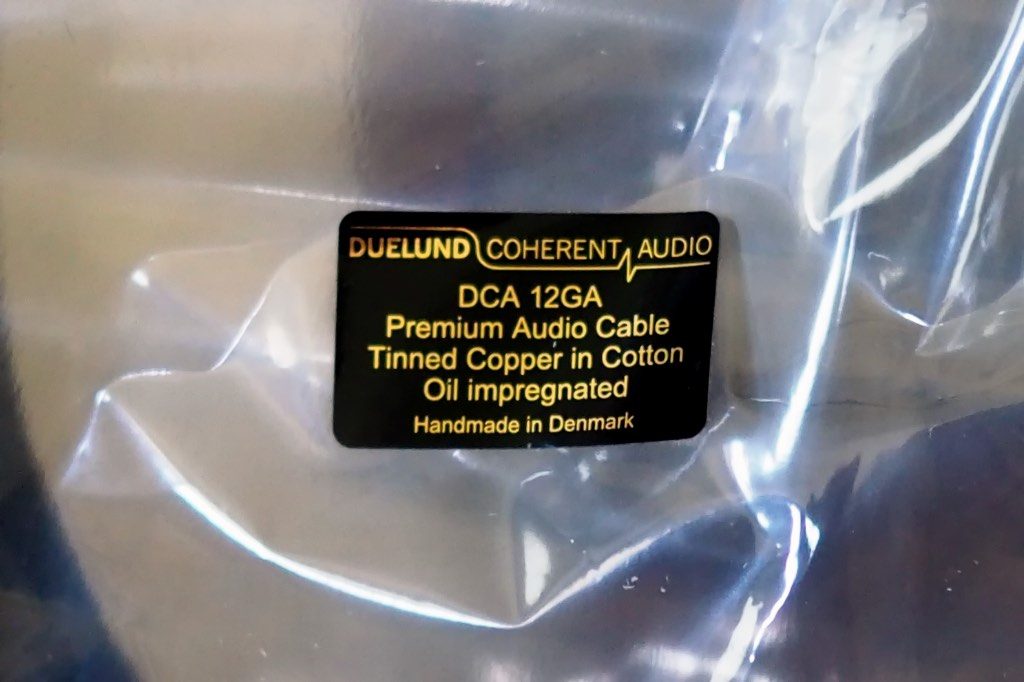
I've been slow getting to comparing the 600V DCA12GA tinned-copper cables to the regular tinned-copper cables as speaker cables, but the plan is to do that today, so I'll be reporting back on that as I get them run-in adequately.
Duelund CAST Tinned-Copper Crossover Breadboards
I've been trying to decide whether to do external Duelund CAST Sn-Cu crossovers or internal Duelund CAST Sn-Cu crossovers with the "Stokowski" Altec's.

A Duelund CAST Sn-Cu crossover breadboard in one of the "Stokowski" Altec's.
AT the moment the Duelund CAST Sn-Cu crossover breadboards are installed into the Altec's high-frequency horn cabinets, as you can see in the photo above.
The plus side of the high-frequency horn cabinet location for the crossovers is that it minimizes the loudspeakers' footprint, but the down side is that you can only see the Duelund CAST Sn-Cu crossovers if you walk around the back of the loudspeakers.
The flip side is true for external crossovers, as their down side is they take up more floor space, but their up side is the snazzy looking Duelund CAST Sn-Cu components are always visible to admire, and more visible for photos in Jeff's Place blog posts and Positive Feedback feature-length articles.
Given that the back of the "Stokowski" Altec loudspeakers high-frequency cabinet are always open to view the Duelund CAST Sn-Cu crossovers, I've finally concluded that I like that location the best, and so for photo shoots for Jeff's Place and Positive Feedback I'll include both front and back views so I can give Frederik the deserved maximum visibility for these amazing Duelund CAST Sn-Cu components.
Although, I am considering mounting the Duelund CAST Sn-Cu crossovers on platforms inside the high-frequency cabinets, so that if I change my mind at some point in the future and want to take them out of the high-frequency cabinets and use them as external crossovers I can easily do that.
I am thinking through what that sort of a design would look like, so more on that as I get that figured out better (or not).

Santos Oropel's custom terminal strips for his Duelund CAST crossovers.
Let me introduce another Santos to you, this time Santos Oropel (Twin Audio Video), who has custom terminal strips made for use in his own Duelund crossover projects (see the accompanying photos).
I'm really impressed with Santos' custom made terminal strips, and I'm going to be using them in my own Duelund CAST Sn-Cu crossovers to organize their wire connections.

Santos Oropel's custom terminal strips for his Duelund CAST crossovers.
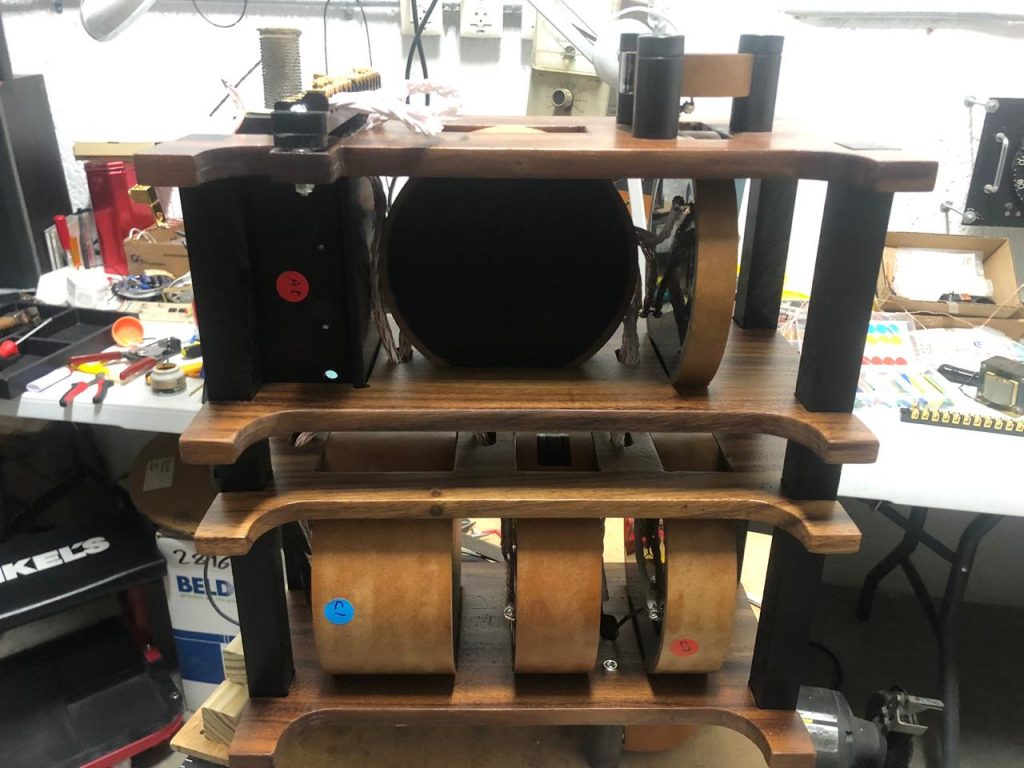
Nice side view of Santos' custom Duelund CAST crossover.
It turns out that with the number of connections that need to be made inside the Duelund CAST Sn-Cu crossovers, that my normal McMaster-Carr connectors are pretty much overwhelmed, and so I needed to do something different to cleanup & organize the layout of the wiring connections.
To satisfy the connections in the crossover, each crossover will need one terminal strip with 6 connection points, and two terminal strips with 5 connection points.
Speaking of wire connections, after I choose the optimum speaker cables for the project - it's between the 600V Duelund DCA12GA or the regular DCA12GA at this point - I'll start optimizing the runs of wire that go to the 16 Ohm Altec 804A high-frequency compression drivers.
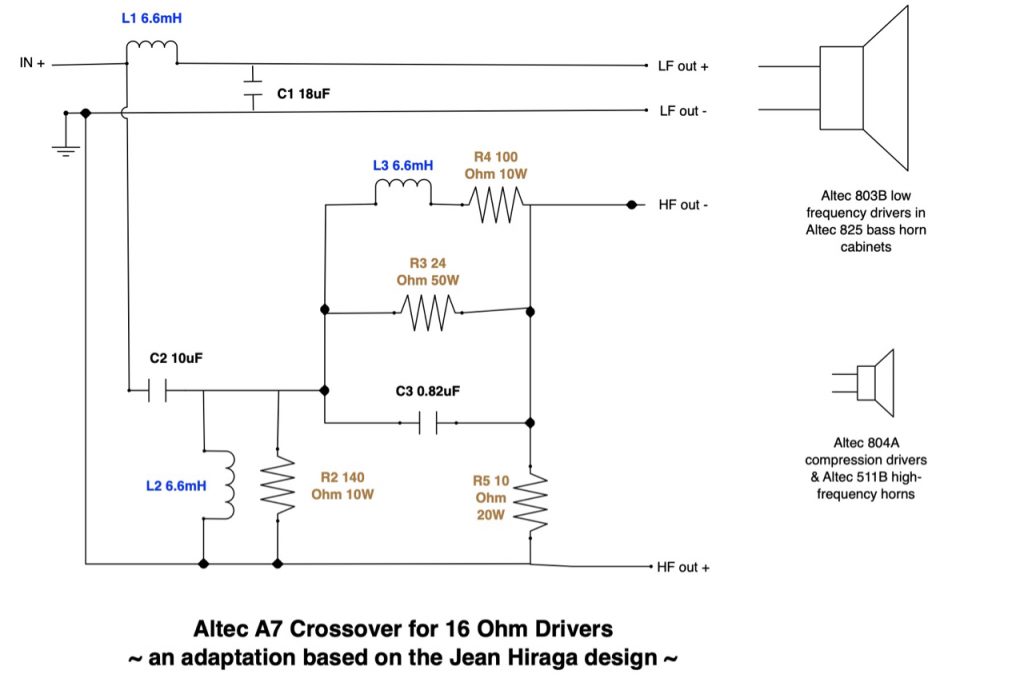
Keep in mind that there is no absolute "best" wire choice for every purpose, and the goal is to choose the particular combination of wires that provides my favored voicing for the components involved.
At the moment I'm using Duelund DCA16GA tinned-copper wire in the crossovers to connect to the 16 Ohm Altec 803B low-frequency drivers and the 16 Ohm Altec 804A high-frequency compression drivers.
As soon as I get done choosing between the Duelund 600V DCA12GA and regular DCA12GA tinned-copper cables as speaker cables, I'll try both the Duelund 600V DCA20GA and regular DCA2oGA tinned-copper cables for the connections to the 16 Ohm Altec 804A high-frequency compression drivers.
So stay tuned for more info on wiring choices with the tinned-copper Duelund DCA cables.

Collings Eastside Jazz LC guitar.
Ok, that's it for now, it's time to start playing my guitar for a while!
As always, thanks for stopping by, and may the tone be with you!





























